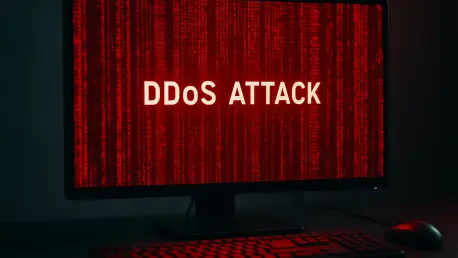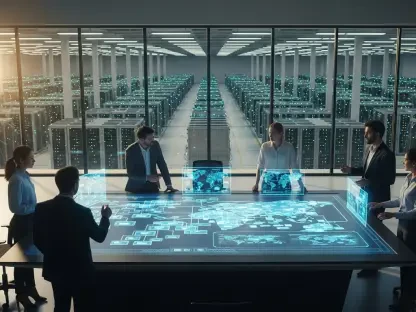As cities worldwide embrace digital transformation, a significant and troubling escalation in cyberattacks has emerged, targeting local government websites, especially through Distributed Denial of Service (DDoS) attacks. These incidents highlight a vulnerability revealed by the digitization of public services, which, while intended to enhance convenience for citizens, has inadvertently expanded the attack surface for cybercriminals. As cities strive to modernize their infrastructure and services, they unknowingly pave the way for a surge in sophisticated cyber threats that pose substantial risks, sparking a cybersecurity crisis affecting communities globally. Governments must now confront this urgent security dilemma, balancing the promise of digital advancement with the imperative to ensure citizens’ trust and safety in an increasingly connected world.
Vulnerable Digital Infrastructure
The Growing Complexity of Cyberattacks
Today’s cybercriminals aren’t just content with merely stealing data; their attacks have evolved into intricately disruptive actions with the potential for large-scale financial damage. Local governmental bodies find themselves increasingly targeted by attackers who leverage the vulnerabilities exposed through digitalization. This evolution has seen attacks grow in complexity and in the frequency at which they occur. Multi-terabit DDoS attacks serve as a prime example, wherein criminal factions exploit the widened attack surface enabled by digital services, overwhelming traditional cybersecurity measures in mere minutes. Now leading with disruption and leverage, these criminals have shifted focus from data theft to causing significant chaos and disruption within government infrastructures. City leaders must recognize this paradigm, emphasizing the urgency in adapting cybersecurity strategies to cope with this evolving menace.
Resorting to Costly Measures
The traditional municipal IT infrastructures’ lack of preparation stems from a reliance on outdated legacy systems combined with constrained budgets. In many cases, the expertise of IT personnel is limited by insufficient cybersecurity knowledge, contributing to this precarious situation. This amalgamation of obstacles often leaves local governments with the unfortunate option of paying ransoms to restore services swiftly, thereby sidestepping prolonged service outages or disruptions. Unfortunately, this reactive measure drains public funds and boosts cyber insurance premiums, exacerbating the economic burden placed on taxpayers while also feeding a growing criminal economy. The repercussions extend beyond immediate financial loss, setting a precedent that perpetuates and legitimizes criminal activities. It is imperative for municipal administrations to break from this cycle, prioritizing strategic investments in comprehensive cybersecurity frameworks to safeguard against these damaging tactics.
Strategic Defense and Training
Importance of Specialized IT Training
With 85% of government leaders worldwide recognizing online services as crucial, the step towards digitization seems inevitable. The disconnect, however, lies in preparing cybersecurity personnel adequately to meet the rising threats associated with this shift. Specialized training tailored to identify critical systems and their vulnerabilities is paramount. These systems, if compromised, could lead to significant disruptions across essential services, profoundly affecting citizens’ daily lives. Training must focus on equipping IT staff with the skills needed to discern potential threats, respond promptly to incidents, and recover with minimal downtime. Comprehensive education initiatives that continuously update staff on emerging threats are vital to closing the knowledge gap, ensuring that municipal teams are not only reactive but proactive in their cybersecurity stance, safeguarding public infrastructures effectively.
Layered Defense Against DDoS Strikes
In combating these cyber threats, adopting a layered defense approach emerges as essential. This strategy should integrate network monitoring and traffic filtering systems capable of detecting anomalies promptly. Additionally, cloud-based mitigation tools offer significant advantages, allowing defenses against DDoS attacks to be managed dynamically and remotely. The urgency lies in activating automated systems that do not rely on overworked IT personnel, responding immediately to threats whenever detected. Such sophisticated tactics must be continuously refined and optimized, acknowledging that modern DDoS campaigns resemble coordinated attacks, combining widespread data floods with precise focuses on particular applications. Municipalities must adopt these layered defenses without delay, ensuring that primary and secondary lines protect critical infrastructure from multifaceted threats.
Future Directions in Cybersecurity
A Call for Proactive Measures
Dara Warn, CEO of INE Security, stresses the necessity for local governments to approach cybersecurity challenges proactively rather than relying on reactionary responses. The barriers to instigating intricate DDoS attacks are steadily decreasing while their destructive impacts amplify, necessitating the immediate implementation of comprehensive security strategies. Governments must perceive these modern threats akin to military operations, adapting their defenses to counterattacks targeting multiple weaknesses simultaneously. Expanding cybersecurity efforts beyond minimum compliance, local administrations must adopt a framework that emphasizes foresight rather than mere response. Embracing these strategies not only fortifies defenses but also strengthens confidence among citizens who rely on digital services for everyday needs.
Continuous Cybersecurity Education Programs
Ongoing and constantly updated cybersecurity education programs are essential for municipal IT teams to effectively combat new threats. These programs play a crucial role in closing skill gaps, enabling professionals to efficiently detect, respond to, and recover from intricate cyberattacks. A team that is well-versed in cybersecurity acts as a primary defense, implementing strong protective measures to safeguard crucial services and public data. Creating and sustaining a knowledge base in the public sector not only bolsters defense strategies but also promotes a setting where innovation coexists with unwavering security. Continuous education underpins the development of a resilient public service infrastructure, embedding cybersecurity deeply within modern governance.
Globally, cities’ digital transformation presents immense opportunities alongside significant cybersecurity challenges. With rising cyberattacks on local government websites, it’s vital to adopt proactive strategies involving advanced training, multilayered defenses, and strategic foresight. This narrative highlights the need to balance strong defense and innovation, guiding municipal leaders to wisely protect essential services from evolving threats in our interconnected world.









